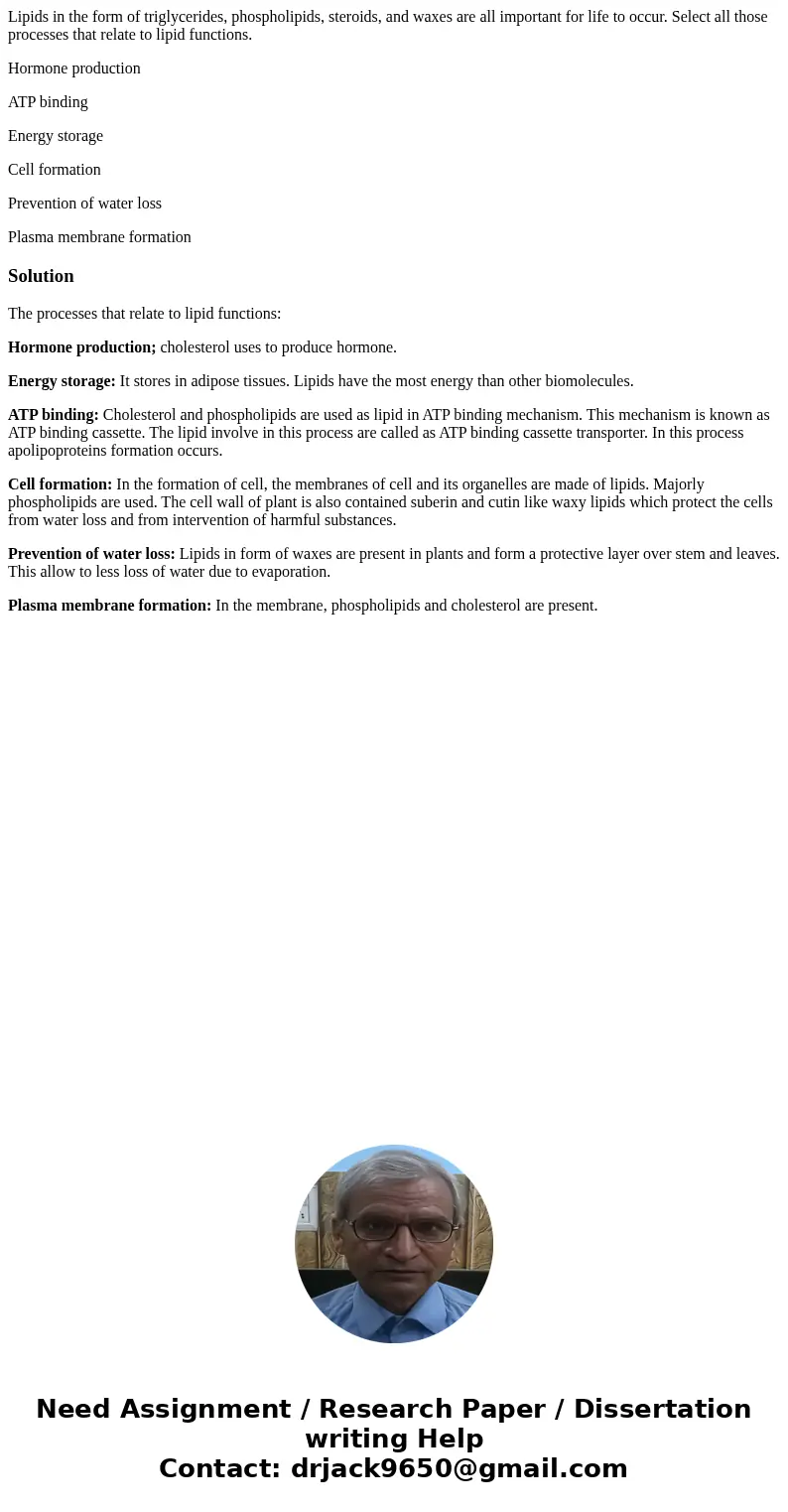Lipids in the form of triglycerides phospholipids steroids a
Lipids in the form of triglycerides, phospholipids, steroids, and waxes are all important for life to occur. Select all those processes that relate to lipid functions.
Hormone production
ATP binding
Energy storage
Cell formation
Prevention of water loss
Plasma membrane formation
Solution
The processes that relate to lipid functions:
Hormone production; cholesterol uses to produce hormone.
Energy storage: It stores in adipose tissues. Lipids have the most energy than other biomolecules.
ATP binding: Cholesterol and phospholipids are used as lipid in ATP binding mechanism. This mechanism is known as ATP binding cassette. The lipid involve in this process are called as ATP binding cassette transporter. In this process apolipoproteins formation occurs.
Cell formation: In the formation of cell, the membranes of cell and its organelles are made of lipids. Majorly phospholipids are used. The cell wall of plant is also contained suberin and cutin like waxy lipids which protect the cells from water loss and from intervention of harmful substances.
Prevention of water loss: Lipids in form of waxes are present in plants and form a protective layer over stem and leaves. This allow to less loss of water due to evaporation.
Plasma membrane formation: In the membrane, phospholipids and cholesterol are present.

 Homework Sourse
Homework Sourse